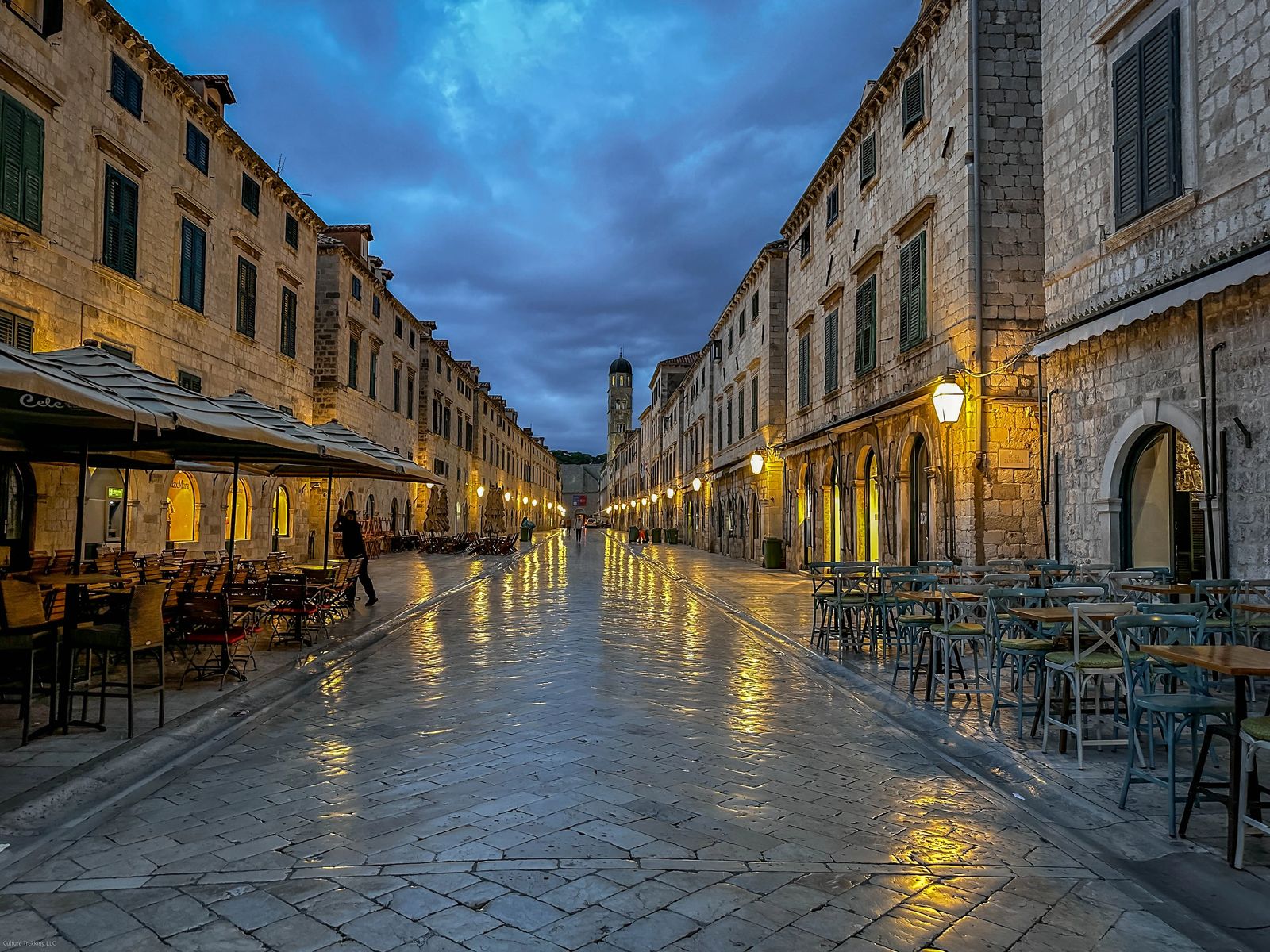
48 Hours in Dubrovnik Croatia Itinerary
With only 48 hours in Dubrovnik Croatia to explore, you can experience the city's stunning architecture, breathtaking views, and vibrant culture. Known as the Pearl of the Adriatic, Dubrovnik's limestone buildings and red rooftops make it a wonder to behold.
As a UNESCO World Heritage Site, Dubrovnik has a rich history and boasts perfectly preserved walls that have been used as a filming location for many movies, including the popular TV series Game of Thrones. Dubrovnik played a significant role in the formerly known Ragusan society's political and governmental structures, which helped them thwart the Slavs, Ottomans, and multiple sieges. Dubrovnik is also a popular stop for cruise ports, making it a perfect spot to explore during a coastal journey.
I visited Dubrovnik in October of 2022, and update this post every year to provide the most up to date information. After taking a 1500 mile road trip through 7 countries in the Balkans - there is a lot more to the story of Dubrovnik and its people that many people don't realize - make sure to check out the brief history of Dubrovnik article on just how politically savvy the Ragusans were.
Quick Look At the One Day In Dubrovnik Itinerary
It will be hard for you to narrow down exactly what you will want to see and do, as there is a lot more to this city than meets the eye. The one thing I would likely do differently on my next visit is spend more time cruising the coast on my second day in Dubrovnik, Kayaking, or spending leisure time on the pebbly beach or taking a snorkel or scuba excursion. Here is a rough itinerary for what to do in Dubrovnik and will go into all the details below on the history and reasoning of why you should visit each.
Day 1
- Vrata od Ploča
- City Walls at opening - (get ticket through Dubrovnik Pass for one day to save time and money)
- Cathedral of Assumption (Dubrovnik Cathedral)
- Jesuit Stairs
- LUNCH - Azur
- Ethnographic Museum
- Franciscan Monastery
- Lovrijenac
- Pile Gate
- Dubrovnik Old Town exploration and walking Stari Grad (main thoroughfare)
- DINNER -Posat
Day 2
- Lokrum Island Day Tour (option 1)
- Split Day Tour (option 2)
- Hike Mount Srd with lunch at top (reserve this beforehand) (option 3)
- Go Scuba Diving or Snorkeling (option 3)
- Relax at Banje Beach (option 1,2,3)
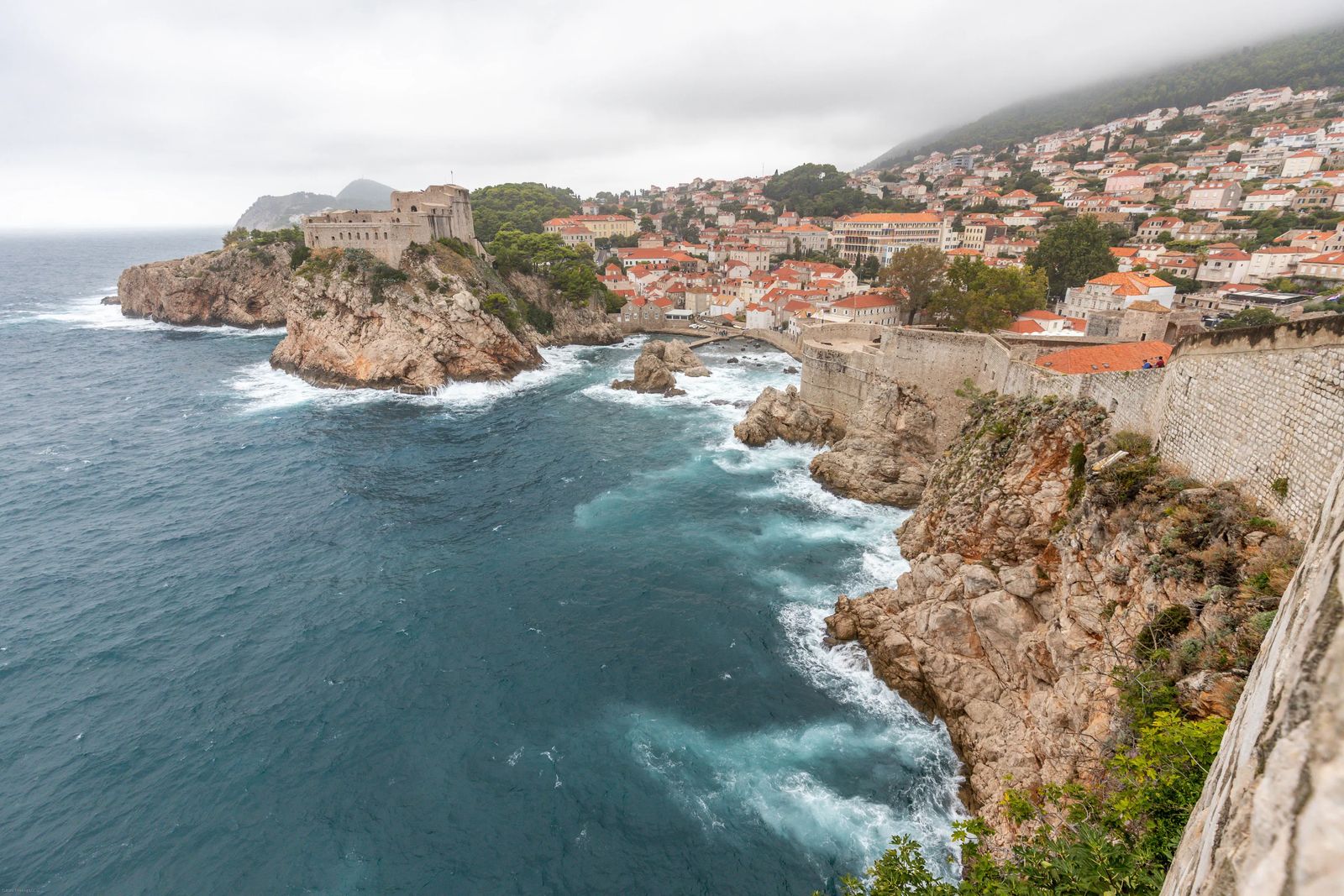
The City Walls of Dubrovnik
The city walls of Dubrovnik are often considered a tourist trap, but for good reason. They are the main attraction that earned Dubrovnik the UNESCO site designation. However, keep in mind that getting up to the walkway can be quite challenging, involving about 100 steep steps and a potentially dangerous drop-off. If you have knee problems, it's best to take precautions before attempting to climb the stairs.
To access the walls, I recommend purchasing the Dubrovnik City Pass. With this pass, you can skip the line and head straight to the walls, while also saving money on other attractions mentioned in this article. The cost of walking the walls alone is approximately 30 Euros, and note that Croatia is transitioning to the Euro from the Kuna.
There are three entrances to the walls, but in my guided tour video, I entered at Pile Gate, which is the main gate. You can also enter at St. John's Fortress and St. Lucas Fortress. The time required to walk the walls varies, from a brisk 45-minute walk to a leisurely three-hour stroll that allows for taking in the breathtaking views.
When touring the walls, be aware that there is no shade along the way. If you're visiting on a sunny, hot day, it's essential to bring a wide-brimmed hat and sunscreen. A personal neck fan may also come in handy. However, I do not recommend bringing an umbrella as the walkway can get narrow in some areas, and it could potentially be hazardous to other visitors.
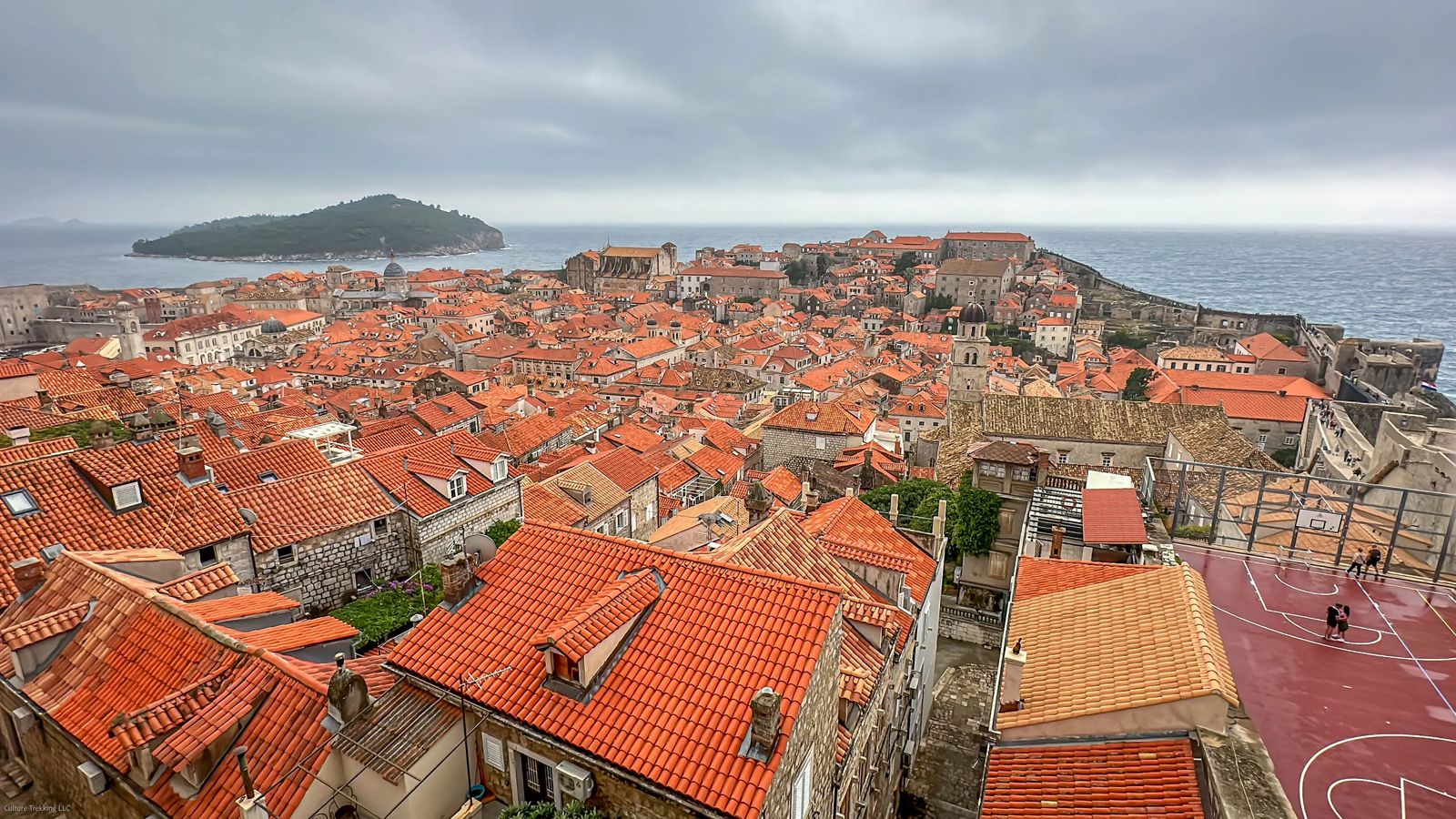
There are cafes along the wall, and a few bathrooms, as well as small garbage cans. The cafes can be quite expensive, for example, a fresh squeezed orange juice cost me about 7 Euros that was about 10oz.
The walk along the walls is about 1.2 miles (1940 m) with 1080 steps in total you will need to climb or descend. I would check to see when cruises come into port and plan your visit to the walls around that - by 10 am the walls were getting quite crowded and descending from the walls was a little scary sharing those stairs with people coming up the stairs. You can easily check cruise port docking times by visiting CruisetoPorts tool , Crew-Center.com List , or AvoidCrowds.com
If you enter from Pile gate, you will travel in an anticlockwise rotation with the first building being the Minceta Tower is (14th century) it is the highest point of the walls and has the best views of the old city (or Kings Landing views). You can see Lokrum island from here with the 1,000 year old Lovrijenac Fortress (Fort Lawrence) where you can go Kayaking to it or snorkeling near the island.
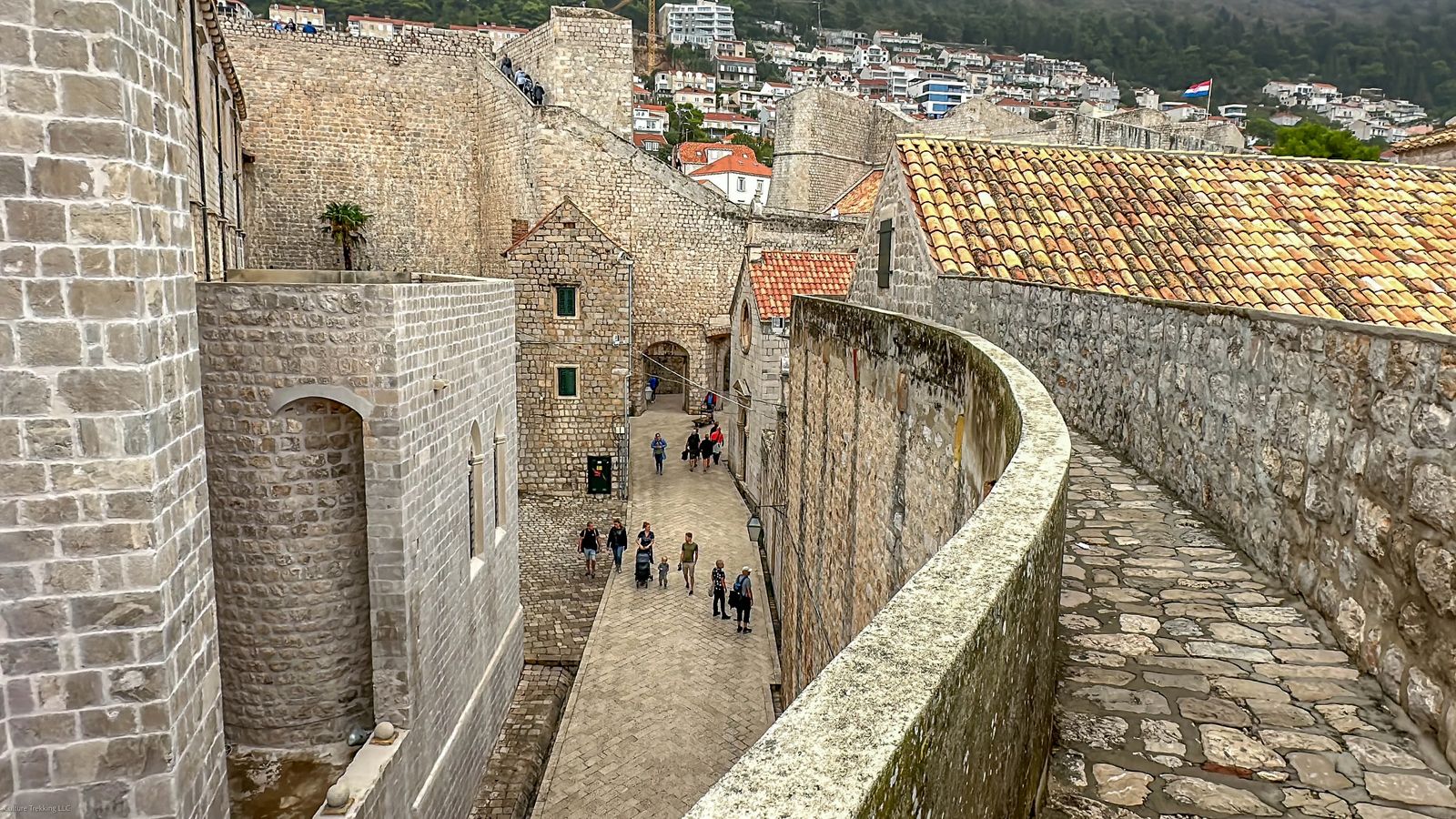
Dominican Monastery beneath you as you head to the Old Foundry Museum (open 10 am-5 pm) portion of the walls. While the museum isn't accessible from the wall walk, take note of where it is and visit this hidden gem of Dubrovnik later. This museum shows how the metallurgic forging helped shape the city, create gunpowder, cast bronze bells and moldings. The museum tells the story of the time of Ragusa's firepower program, developed in secrecy from the Venetian and Ottoman empires. The museum can be hard to find, it is behind a small wooden door next to the basketball court.
You can see Lokrum island from here with the 1,000 year old Lovrijenac Fortress (Fort Lawrence).
You will pass the Turret of the upper corner tower, then the turret of the tower of St Francis. Then the Pile bastion and Pile outer gate watching tourists stream through it into the city onto the main walkway, the stradun. Then it is onto the Puncoela Tower, and then Bokar Fortress.
On the West side is the Dubrovnik Old Town walls in Bokar Fortress, circular in shape and used to help defend Pile Gate.
St John's Fortress is on the southeast corner (Mulo Tower) and this tower defended the city from pirate ships.
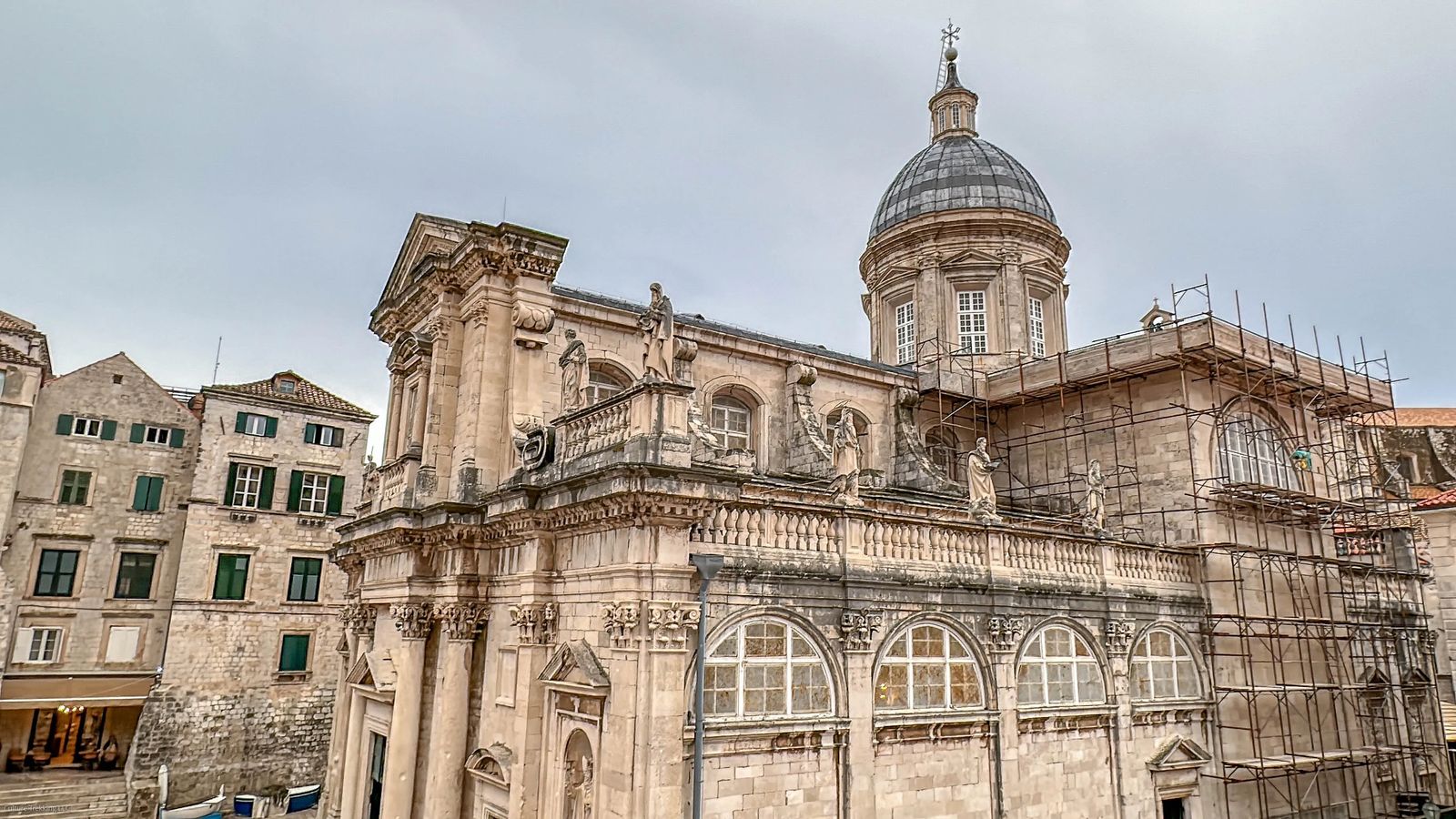
Cathedral of Assumption (Dubrovnik Cathedral)
Open 24 hours
This Roman Catholic Church is the largest Baroque (16th-17th century) church in Dubrovnik. While the original churches of wood date back to the 7th century, the current structure was partly funded by Richard the Lion Heart.
King Richard helped build this church as a sort of votive for surviving a shipwreck near here when he was returning from his 3rd crusade. It isn't just the architecture but the artwork inside that is a must-see. As you enter you are greeted by a facade with the Patron Saint Blaise as well as Joseph with Jesus.
Make your way to the altar and there is a relief 3-fold painting of the Ascension of Mary by the Renaissance painter Titian. Titian was a world-renowned painter from Venice in the 16th century, and a 'painting nomad' as most of his clients were international. Ironically he was good at both religious paintings as well as the profane subjects of the time. It is his work of the ascension of Mary in the Santa Maria Gloriosa dei Frari in Venice and the full-sized painting of the Roman Emperor (a unique way of painting at that time) that truly sealed his international fame.
The real gem and relic of this church though, are the 182 literary items from the 10th-17th century and the gold-plated bones of St. Blaise you will find inside. Talk about going out in style....sheesh...
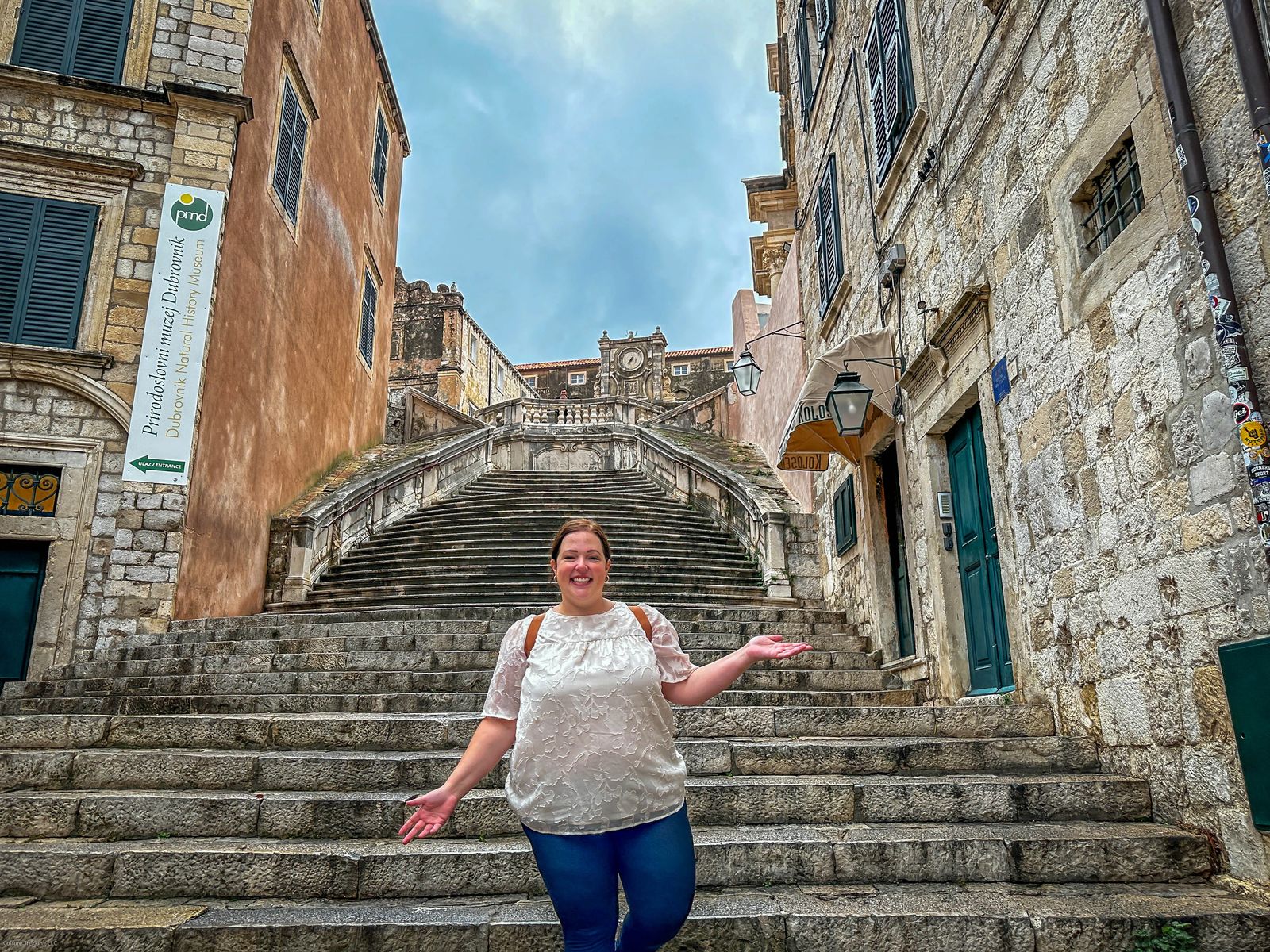
Jesuit Stairs
Visit BEFORE 9 am or after 5 pm or the entire thing is going to be filled with people, and it will be hard to get a photo even with long exposure.
The Baroque stairs actually lead to St Ignatius church in Gundulic Square and are connected to the Jesuit college. The Bishop of Dubrovnik asked the college to be opened in 1555. After a lot of setbacks, earthquakes, and lack of funding, Ignazio Pozzo a famous Jesuit architect and painter came to the city in 1699 and the church was finally finished in 1725.
If you actually use the stairs to go inside the church you will find magnificent Baroque frescoes with scenes from the life of St. Ignatius de loyla by Gaetano Garcia. This is also where you will find the oldest bell in Dubrovnik's cast in 1355.
While you are here, right across from the stairs is the Dubrovnik Natural History Museum as well which is worth a visit.
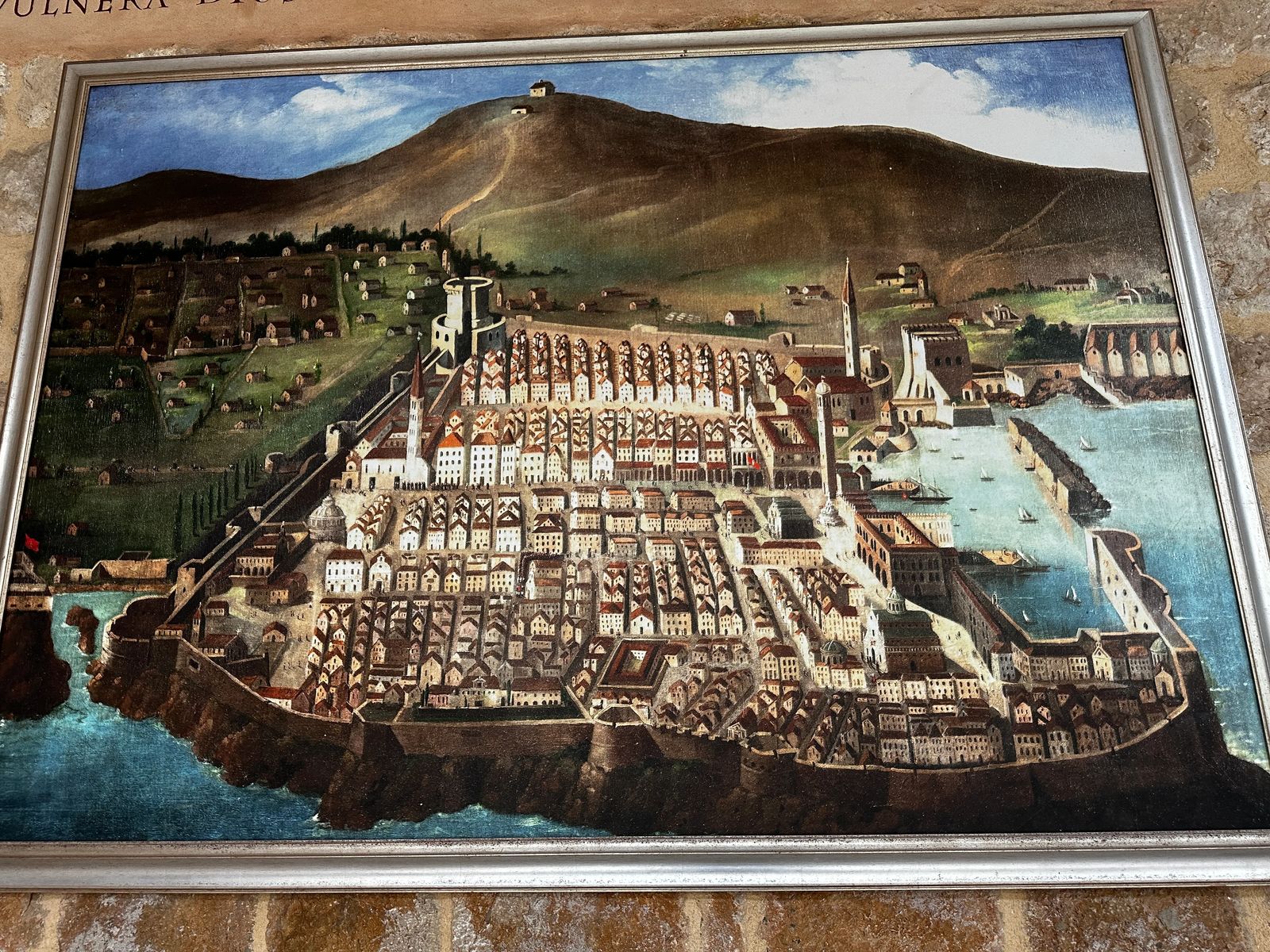
Ethnographic Museum
Open: 9 am-6 pm, closed Wed
Since 1991 the Dubrovnik Republic’s granary, popularly known as Rupe/The Holes, which derives from the name for the underground grain storage areas carved out of bedrock or tufa has been open to the public for touring. Built in 1590, this is a three story structure with 15 food storage pits on the ground floor, and the upper floors were used for drying food and herbs.
The Ethnographic Museum of Dubrovnik have 6,500 artifacts from the Dubrovnik and Croatian poeople that lived in the area. You can see traditional clothing from Dubrovačko primorje, the Elaphite islands, Konavle, Mljet, Lastovo, Pelješac, Korčula, Rijeka Dubrovačka and Župa Dubrovačka.
The ground floor shows the way grain was stored, while on the first and second floors the traditional economic activities.
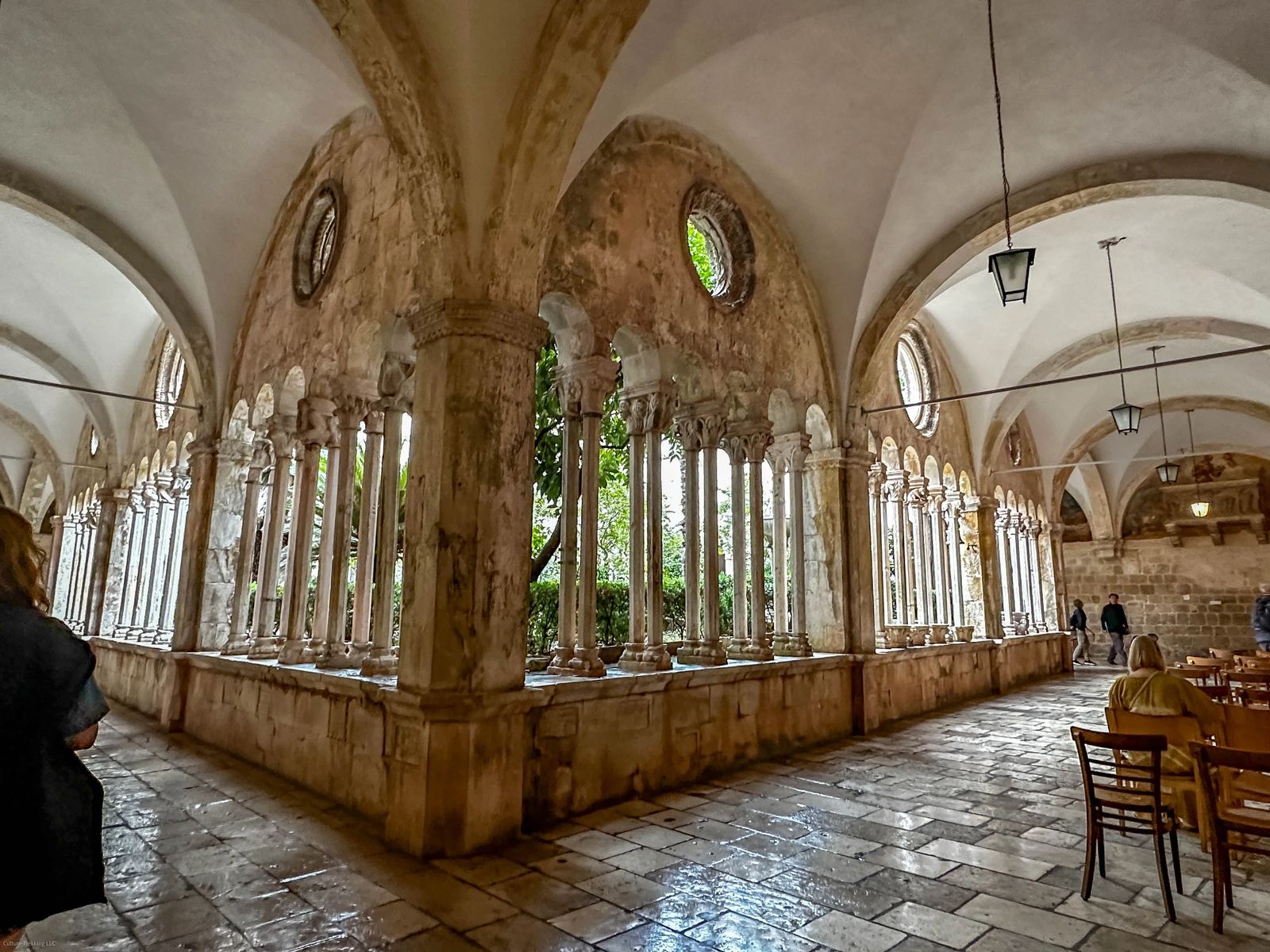
Franciscan Monastery
Being a Physician Assistant, I'm always fascinated by how Medieval Medicine and pharmacies worked, the Franciscan Monastery is no exception. The monastery complex is open from 9am - 6 pm, but the pharmacy inside is open from 7 am to 8 pm. Once you are inside the complex (included in your Dubrovnik Pass) there is a stunning courtyard flanked by archways with different faces at the top of the columns.
If you only walk around this courtyard and don't explore any of the adjoining rooms it will take you about 10 minutes. The adjoining rooms house old artifacts of both the Pharmacy and religious relics. Keep in mind that photos aren't allowed in the Pharmacy.
There are three main areas to explore inside the monastery: the Baroque Church, the Pharmacy (which is the third oldest pharmacy in the world) dating back to 1317, and the library with its tower. After the earthquake in 1667 much of the monastery had to be rebuilt.
The Library houses over 1200 manuscripts, some of which date back to the 10th century. Don't miss the church's two cloisters, one built in the Renaissance style and the other in the Romanesque and Gothic style.
During the Yugoslavian war, the fountain inside the courtyard, provided protection and fresh water to the citizens that were taking shelter there during the 7 month siege of the city that failed.
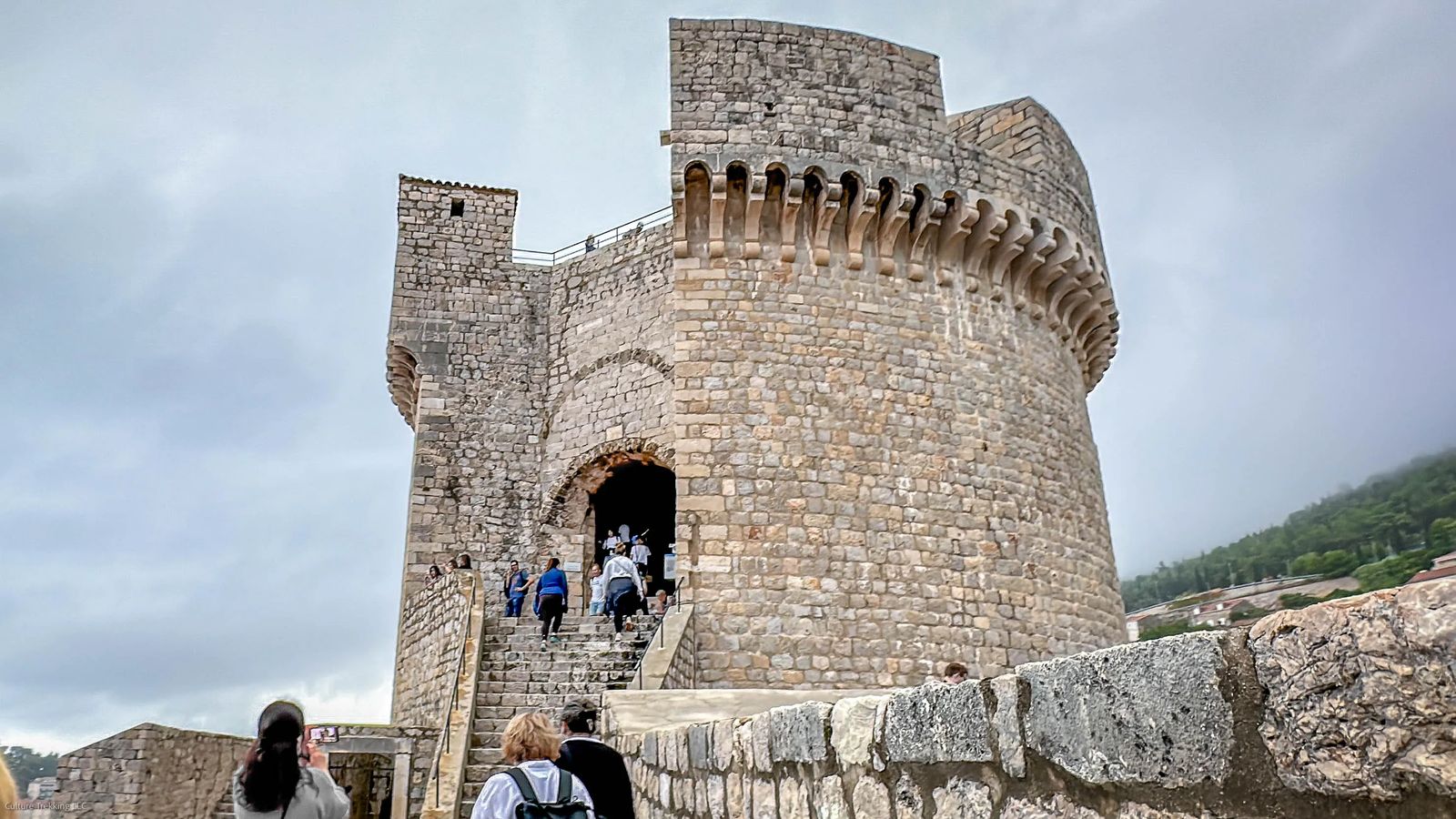
Lovrijenac Fortress (Fort of St. Lawrence)
Open 8 am - 7 pm
Lovrijenac Fortress is one of the most fascinating stories of the fortifications of Dubrovnik. Standing at 131 feet (40 m) above the sea this fortress was built when the citizens of Dubrovnik caught wind (in the 11th century) that the Venetians were going to build a fortress on these rocks as a way to control the city more tightly.
Because there was a law in Dubrovnik that encouraged each citizen to be an ambassador of protection for the city, they all came together to build a fortress of their own. With every citizen helping for the good of everyone, the fortress was built within 3 months.
The walls are defended by ten cannons with the inscription above the entrance to the fortress reading "Non Bene Pro Toto Libertas Venditur Auro" - "Freedom cannot be sold for all the gold of the world".
If you are in Dubrovnik in the summertime, and have a little more time in the city, they do hold performances of Hamlet and others here. This was also where Game of Thrones digitally placed the Red Keep, or the main castle featured in the films.

The Gates Of Dubrovnik
It isn't just the fortifications of the walls that make Dubrovnik iconic, the city gates are equally impressive and have played a significant role in the defense of the city. There are four main gates in Dubrovnik - Pile Gate, Ploce Gate, Buza Gate, and Ponte Gate.
Pile Gate
Pile gate is the main gate into the old city of Dubrovnik, right above the inner gate you will find a statue of Saint Blaise, the patron saint of Dubrovnik. The inner gate was built in 1460, after the original moat that is now the main walkway of Dubrovnik (the Stradun) was filled in and the city walls expanded.
Originally the moat was what protected much of Dubrovnik from the Slavs, that were positioned just on the other side of Mount Syrd. Once the moat or channel was filled, the walls expanded to what we know them today, the inner gate added, and then the outer gate built in the 15th century along with a wooden drawbridge (now stone bridge).
Once you enter Pile gate, you will find Onofrio's fountain in front of you and just to the side is where the visitors center is where you can purchase the Dubrovnik Pass in person, if you didn't do it online. This is also where you will find one of the entrances to the incredible city walls.
Pile gate was also used as one of the filming locations for Game of Thrones as the entrance to King's Landing, and also where Geoffery and Sansa are attacked by the mob.
Ploče Gate
Ploče Gate was built in the 14th century and guarded the East entrance to the city of Dubrovnik along with Pile Gate. It is connected to the city now by a stone bridge, and one of the few entrances that cars can use to get into the city. Saint Blaise is also guarding the entrance to the city from here as well. Ploče Gate was the gateway for the Revelin fortress.
Just past the gate is where you will find the beaches, walking paths and inside you will find the Museum of Modern Art, St. Ignatius Church and Rector's Palace.
The bridge was used when Cersi was taking her last steps into the Red Keep in the Game of Thrones TV series.
Buza Gate
Buže Gate means 'the hole' and is the North entrance into the city. Just below the gate there is a small parking lot that people who rent a car think they can park in when visiting. Be warned that there are no cars allowed inside Dubrovnik, that means the parking lot here is usually full, is very expensive for visitors.
The gate is named after a family that had lived nearby. The gate was built in the existing wall when the Austro-Hungarian Empire ruled Dubrovnik in the 1900's. Around the gate you will find several bars, restaurants, and more quiet location for enjoying a beverage on a hot day.
Ponte Gate
Ponte means "Pier" in Croatian, and was built in the 15th century. If you look to the right as you exit the old town you can see the Fort of St. John. This gate was often considered the weakest point of defense within the city, especially for ships that would come into the harbor. This is where the chains in the harbor connecting the two fortresses were used, but resting the chain on the ocean floor, then when needed, the chains would be tightened between the fortresses and would decimate any unfriendly ship that would come into harbor.

Dubrovnik Old Town and The Stradun (Stari Grad)
This is the busiest part of Dubrovnik, and the main walkway, or Stradun, that you can walk down in about 5 minutes. During the day it is bustling, and even into the night there are visitors and locals alike that enjoy the warmly lit walkway with a drink.
Before the 13th century, this was once a natural moat that separated Ragusa (or Dubrovnik) from the mainland. After the 13th century is when it was filled in, the city expanded, the walls built and the town fortified to what we know it to be today.
Along the Stradun you will find ice cream shops, candy shops, Game of Thrones stores, restaurants and coffee shops (all VERY expensive). There are a few clothing stores featuring local distributors and some chain clothing and jewelry stores.
If you go down the alleyways you will find the cheaper restaurants, Irish Bars, rental properties, and small museums that really tell the history of both the old and modern history of Dubrovnik.
Be careful when walking on the Stradun as the limestone has been worn and polished down by so many visitors. When it rains here, even in shoes with good traction I found my feet slipping out from under me if I wasn't acutely paying attention (which is hard to do in this city).
.jpg?fit=outside&w=1600&h=900)
Day Tours From Dubrovnik
Dubrovnik itself can be seen in one day if you plan your route accordingly, and is also a great base to explore the surrounding areas that each offer its own unique experience. You can take a day trip to the island of Korčula to explore the old town and try some delicious wine, visit Krka National Park for the stunning waterfalls and pair that with a trip to Mostar in Bosnia and Herzegovina with its Ottoman-style bridge.
Head town to the Bay of Kotor another UNESCO World Heritage site, and just get lost in the Maze of Streets there and see all the cats. There is also kayaking, snorkeling, scuba diving and island hopping along the coast. The reason it is called the Dalmatian coast is because of all the islands that dot the coast here - make it look like spots on a Dalmatian when looking at a map.
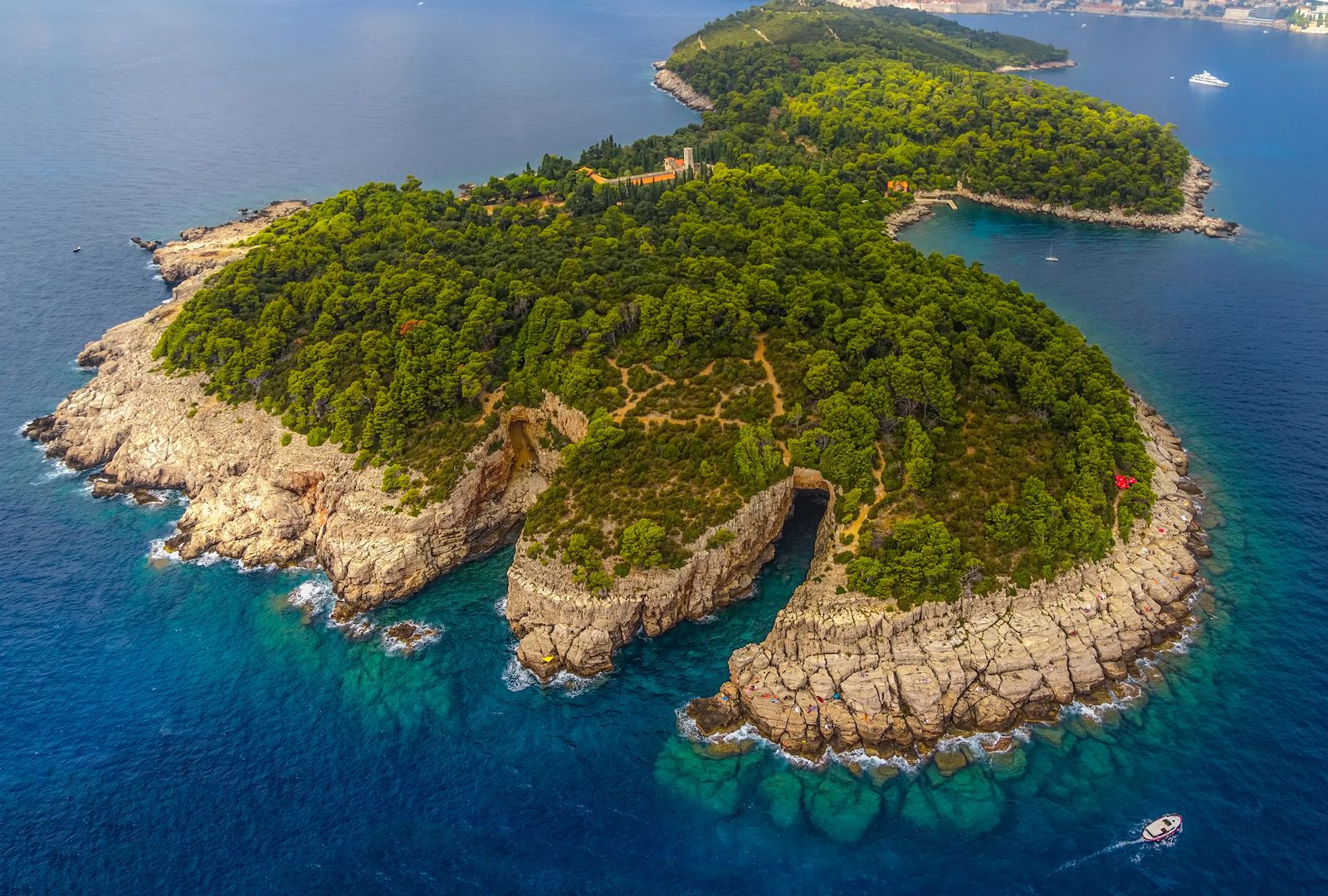
Lokrum Island Day Tour
If you want a quick adventure from Dubrovnik, you can hop over to Lokrum Island on a quick 10 to 15-minute ferry ride from the Old Port. To visit it costs about 5 Euros and the ferry travels back and forth about four times in an hour.
It is said that Richard the Lion-Heart was cast ashore on Lokrum island after his shipwreck in 1192 when he was attempting to return from the crusades. In gratitude to the Lord he built a church in thanks here. Thus was born the 12th century Benedictine monastery here that provides a fascinating look into the history of the islands.
It is said that Napoleon built a fort on this island, it has its own lake, a few hiking trails and is a great spot to both Kayak and snorkel at. The intertidal zone on Lokrum islands gives a home to some unique creatures such as: the rock sea urchin, Mediterranean red sea star, mermaid's wine glass algae, Neptune grass, damselfish, along with eels, lobsters, octopus and crabs.
There is a legend of the Imperial pearls here as well, a Bavarian duchess named Elisabeth, put her 'old tired pearls' in a shoe to help them regain their life. Unfortunately she died before being able to retrieve them, and the island still watches them for her glittering at night, and protected by the sea foam during the day.
If you are a scuba diver, there are a few shipwrecks out here as well you can explore.
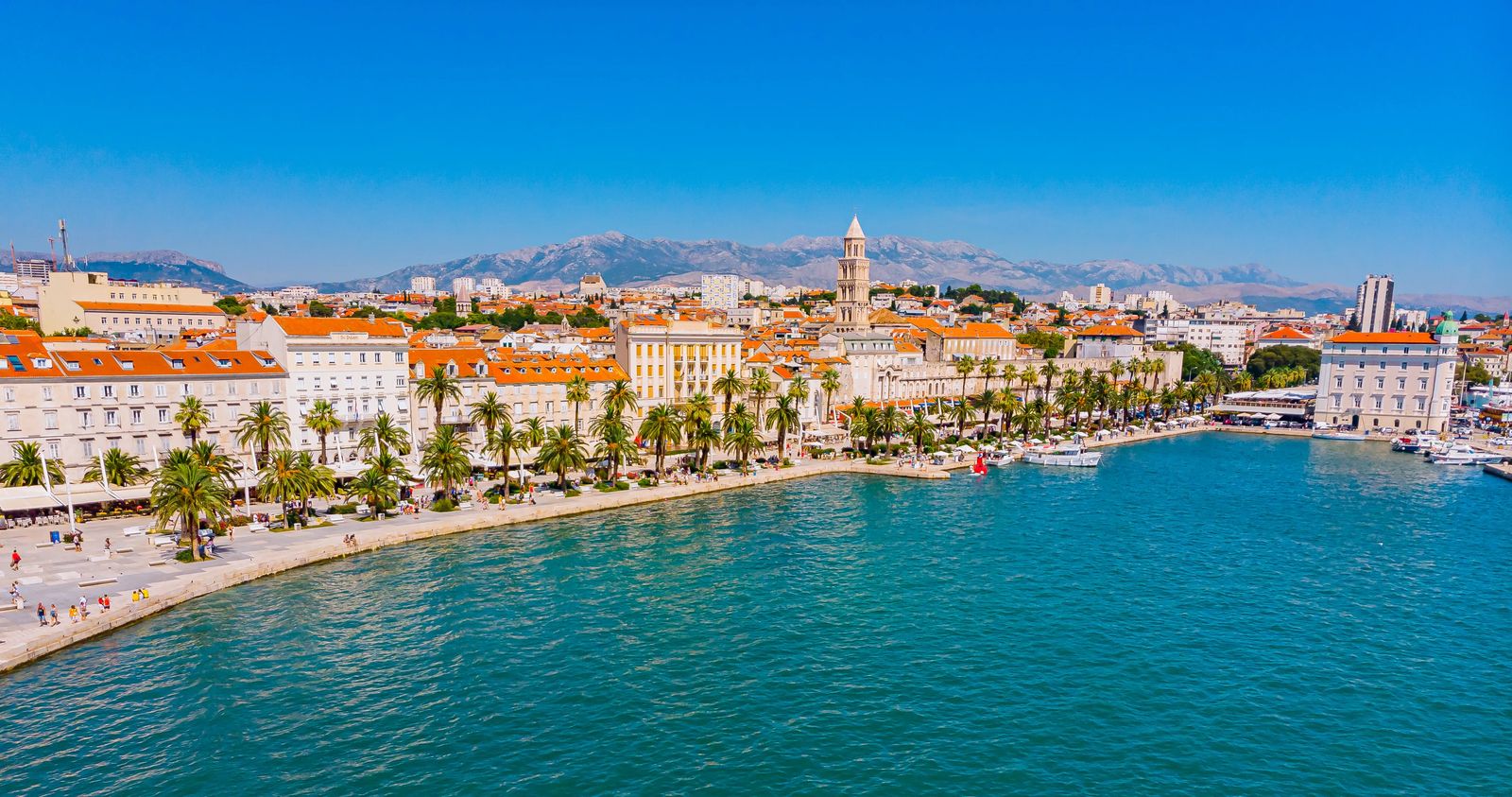
Split Day Tour
Visit the second largest city in Croatia, and former palace of a Roman Emperor from the 4th century - Split Croatia. Split is a UNESCO listed site because of Diocletian's Palace, a Roman Emperors retirement home, and one of the only Roman Emperors to die of natural causes. You can tour the former mausoleums turned Christian Churches and baptistries (after Diocleatian tortured Christians here for decades).
It can be easy to get lost in the city so I highly recommend a guided tour in a small group. Split is also a cruise ship stopping place and can get very crowded, so smaller groups are able to see and do more with limited time, and maneuver through the city better.

Hike Mount Srd & Dinner At Sunset
Mount Srd looms over the city of Dubrovnik, but was also a key part of how the city was so protected from the Slavs, Hungarians, Ottomans, and Turks. Now it is used as a popular hiking location that has well marked trails taking anywhere from 30 minutes to and hour and a half depending on your fitness level. The trail does get steep in some parts so make sure you are up for the challenge, and have some good shoes on. Also make sure you bring enough water as there aren't very many places to catch a break until you get to the top.
Once you summit the mountain, you can enjoy a nice dinner from a terrace that offers some of the best views of Dubrovnik. The cafe does get quite crowded early on though, so if you plan to do the hike for sunset dinner (highly recommended) then I would make sure to make a reservation.
If you aren't up for the hike, or want to make it a romantic evening, you can also catch the funicular up to the top of Mount Srd as well. As of 2023 it costs about 27 Euros to ride the funicular up to the top, this is one thing that is NOT included in the Dubrovnik Pass.
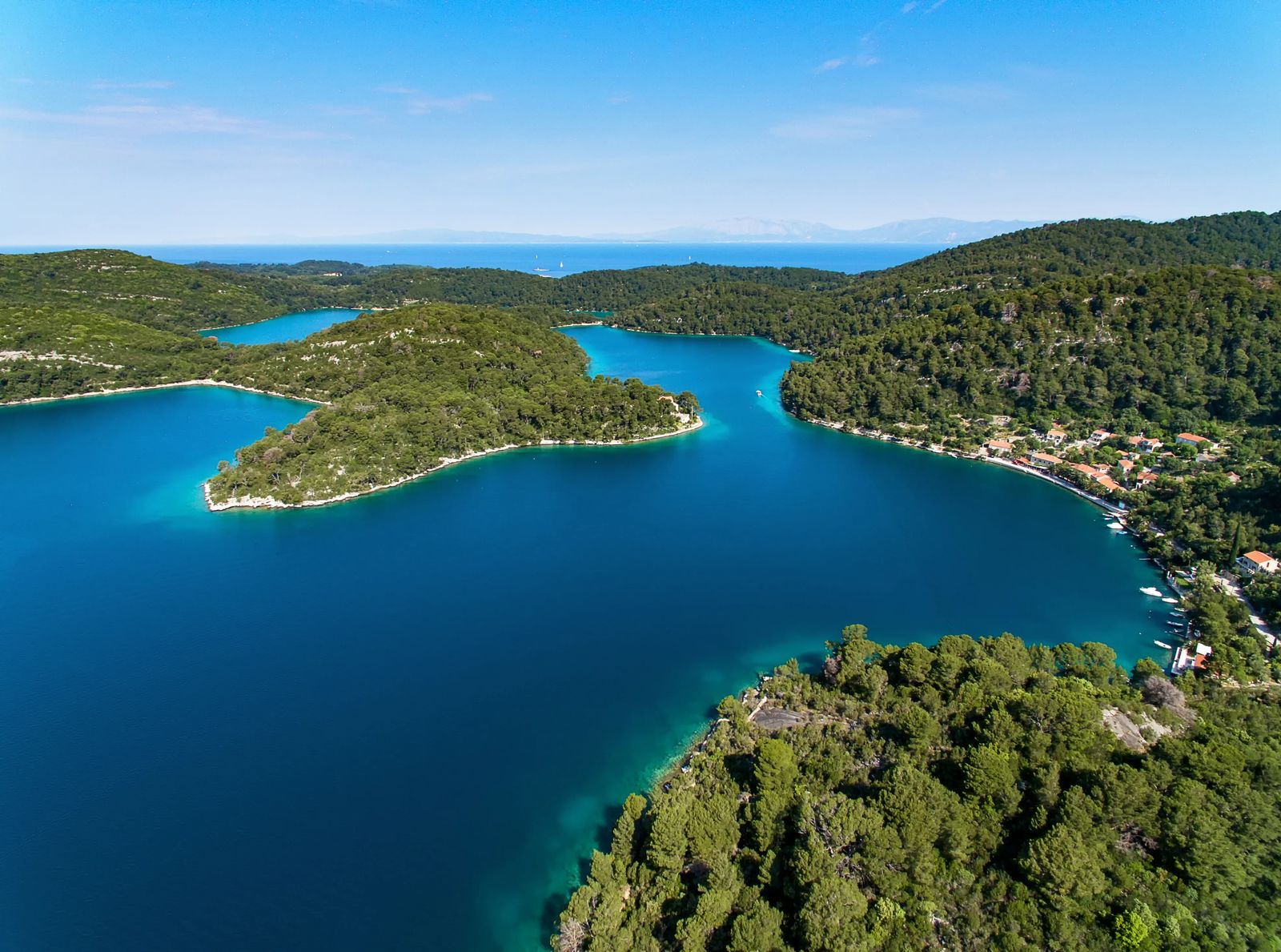
Island Hopping In Dubrovnik
The blue, crystal clear waters of Croatia are sought after for Scuba Divers and Super Yachts alike. Island hopping is a popular day activity for many that visit the city. Take a ferry to Mljet the green island known for biking and hiking. Hop to Korčula on a ferry where you can taste divine wine and olive oil. Visit the largest island Šipan by ferry as well, with some of the BEST beaches near Dubrovnik.
There are private tours available, so you can make your own itinerary without having to wait for the ferry, and stop to snorkel or explore wherever you like.
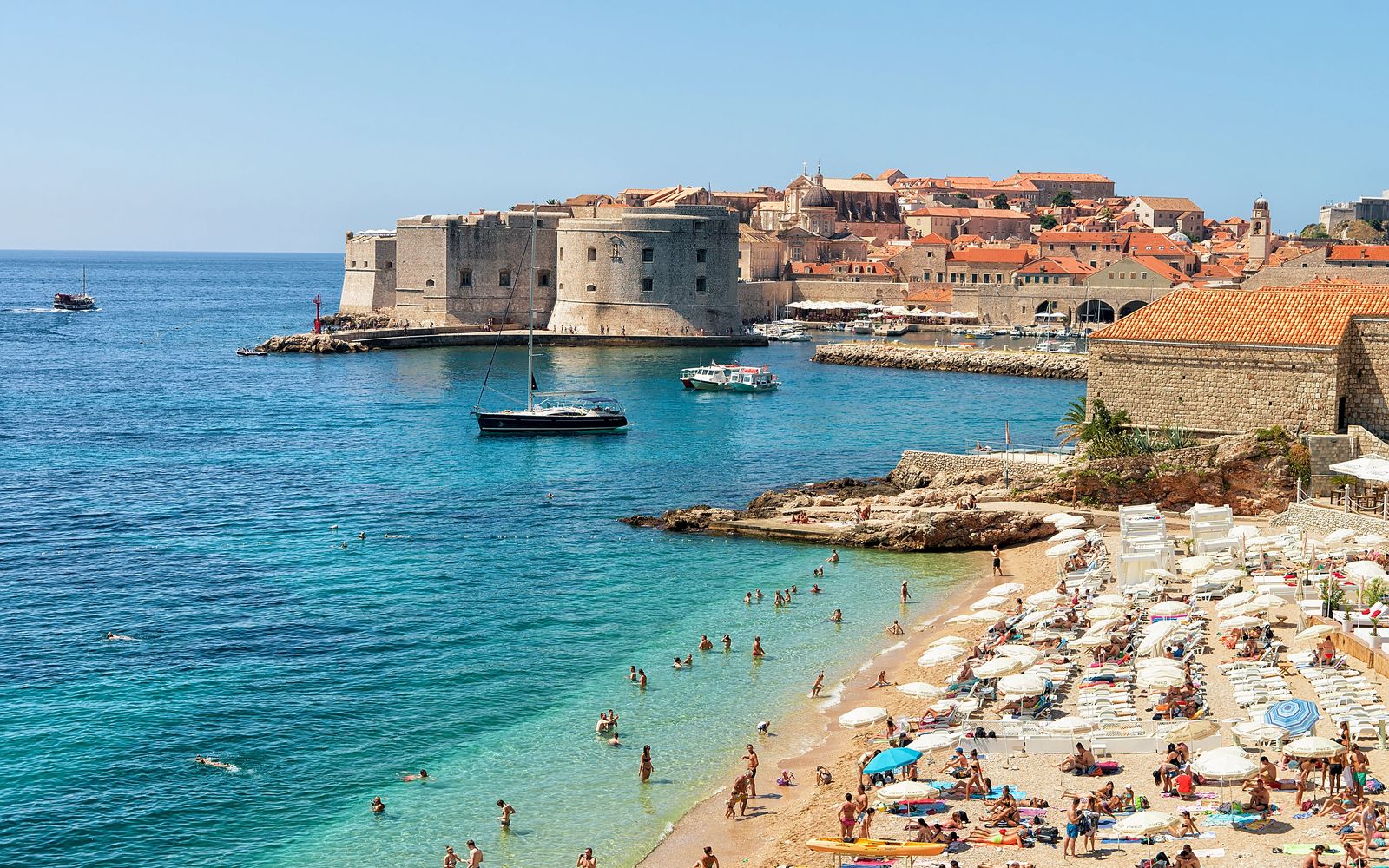
Beaches in Dubrovnik
If you are looking to lounge on a beach with crystal clear waters near Dubrovnik, then Banje beach is your best bet. The beaches here are quite pebbly and can be rough on the feet - so bring some water socks to help with that. From Banje Beach you can jet-ski, go parasailing, or play some volleyball. There are also plenty of bars close by if you want a drink and to doze off in the sun for awhile (just don't forget sunscreen ;)
If you want a beach that is a little less crowded, take a short bus ride down to Sveti Jakov. It is a more secluded beach with not as many amenities, but is a popular spot for snorkeling surrounded by cliffs.
Another great option for those who like to go off-the-beaten-path, is Pasjača Beach. Located about 30 minutes outside Dubrovnik, this beach is not for the faint of heart as it requires a steep descent into the beach. It is worth the trek though, because of virtually being able to have the place to yourself if you time it right.
Other noteworthy beaches you might try are Copacabana Beach, Lapad Bay Beach, and Cava Beach. While I'm not one to really sit on a beach and do nothing, the quality of Snorkeling all along the coast here would make any beach visit worth exploring.
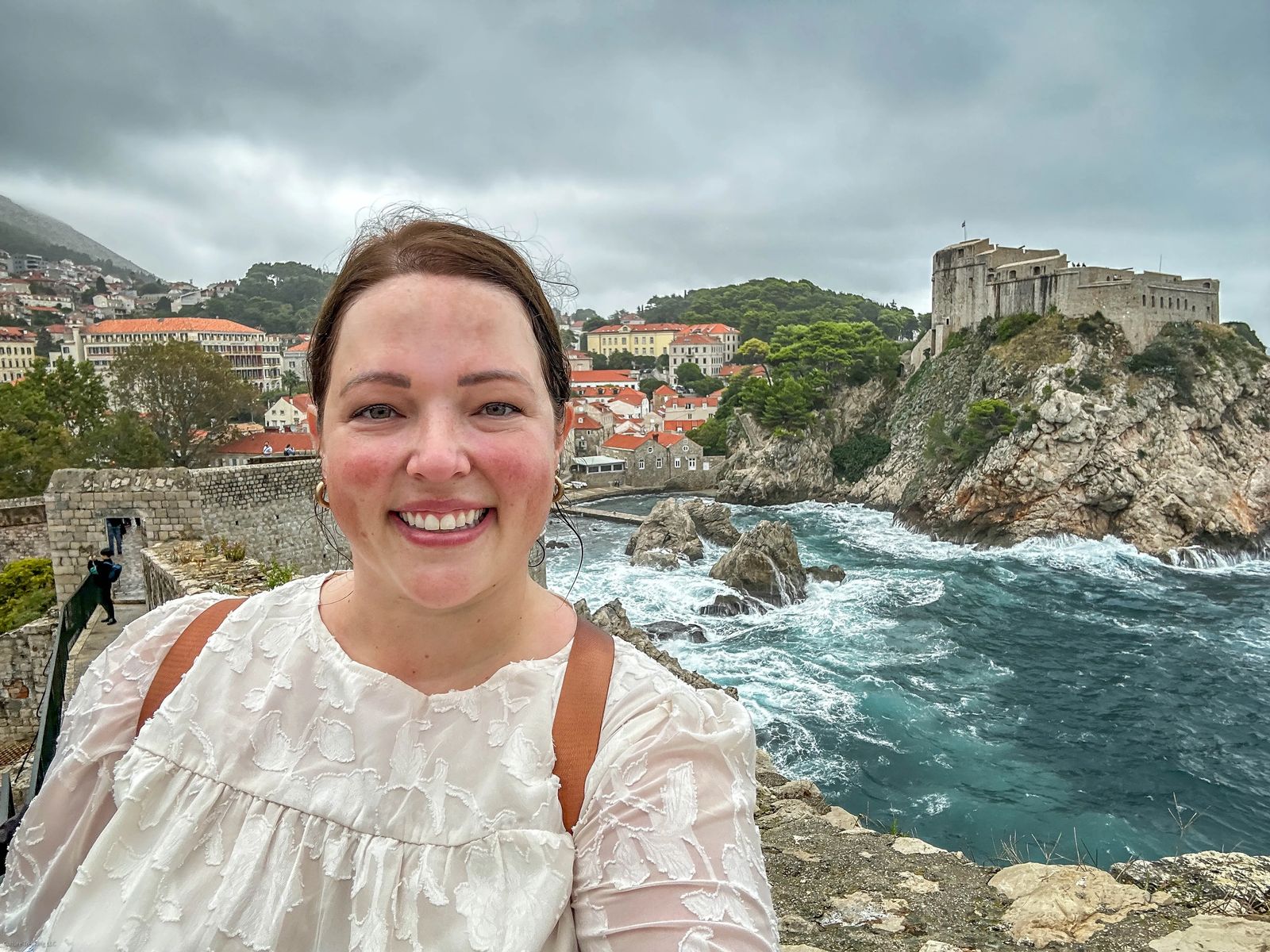
My Takeaway of Dubrovnik
While you may only have 48 Hours in Dubrovnik, even spending a week here would not be enough time to really see and experience all the Dubrovnik has to offer. Dubrovnik has so much fascinating history that I think is often missed but makes the city come alive once you read it. The lack of cars in the Old City, gorgeous blue waters of the Adriatic, warmly lit city with glittering lights and epic foodie scene here makes this such a romantic getaway dream.
I don't say this often about the cities I visit, but Dubrovnik certainly is a city I could return to again and again. While I was there I wasn't able to go snorkeling or scuba diving because of storms and lost luggage - so when I go back - making sure to prioritize exploring the natural wonders of Dubrovnik is certainly going to be high on my list and why I included it for you in this guide.
Please let me know in the comments if this article was helpful, or what you would add or take out. All my best and hope you have some stellar adventures when you visit Dubrovnik.
Guided Tours of Dubrovnik
Like it? Pin it for later! Sharing is caring ;)
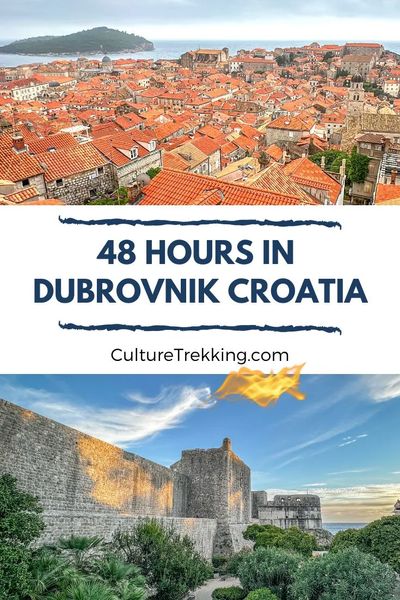.jpg?fit=outside&w=1600&h=2399)
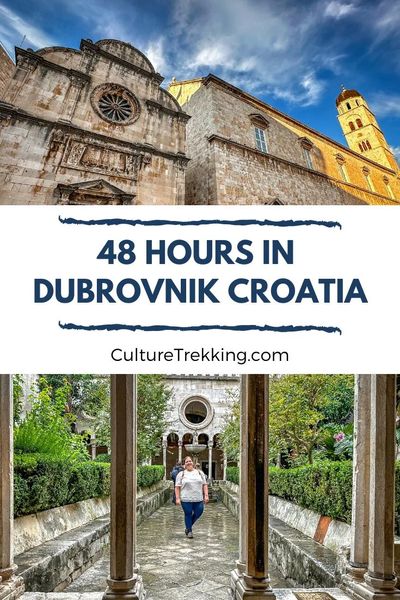.jpg?fit=outside&w=1600&h=2399)
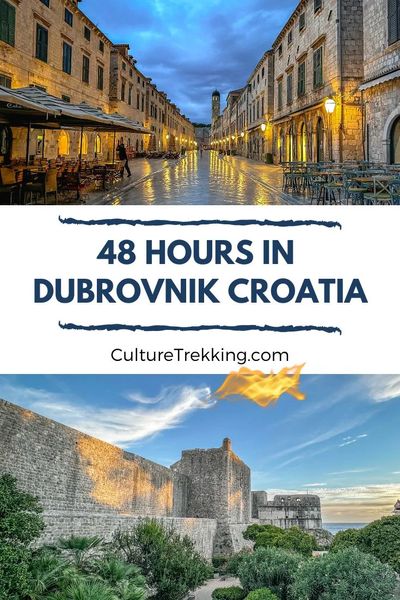.jpg?fit=outside&w=1600&h=2399)
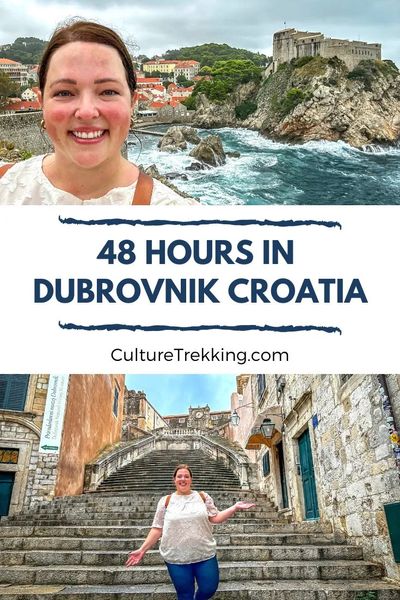.jpg?fit=outside&w=1600&h=2399)
Where to stay in Dubrovnik
Latest Articles On Culture Trekking


Welcome to Culture Trekking!
My name is Janiel, I specialize in solo female travel, cultural connections, sustainable adventures, food and history to help make your travel experiences fun, meaningful, and delicious. My experience in travel, and my personal story have allowed me to get published in Fodor's Travel, Atlas Obscura, Metro.co.uk, Trip Advisor, and multiple Podcast interviews. You can find me on pretty much every social media channel YouTube, Instagram, Twitter, Facebook, Pinterest, TikTok. To read more about me and my story click here. If you are a brand and would like to work with me, click here.

















